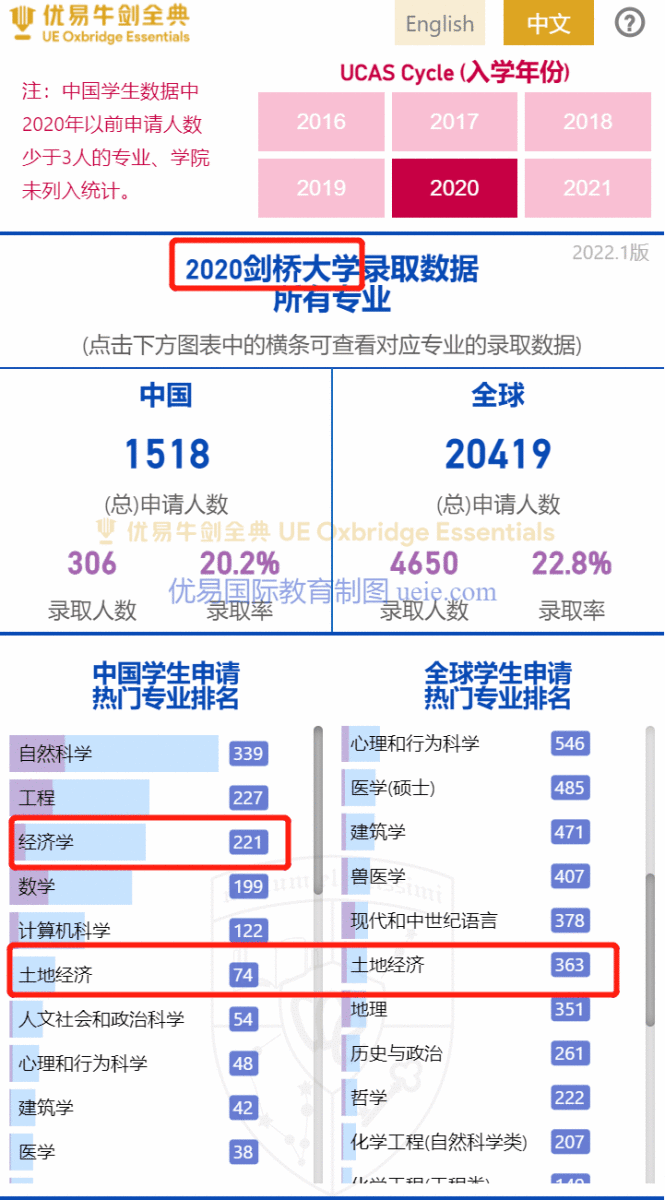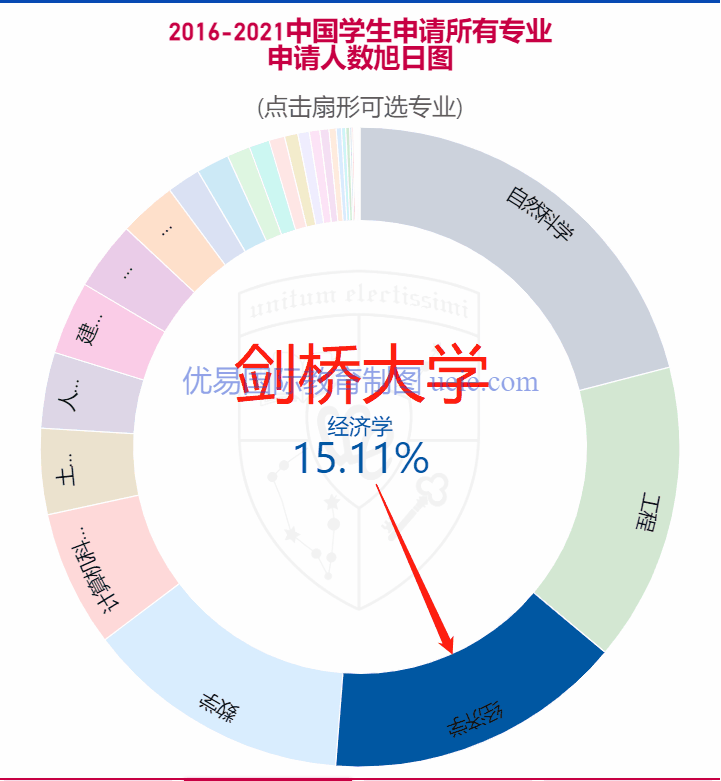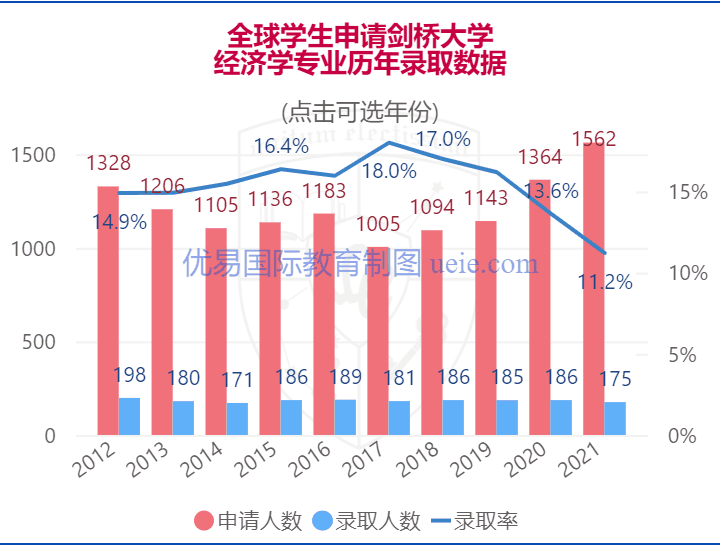This article is included in the Oxbridge Essentials® “Economics Volume”.
I. Comparison of Application Popularity
1. Overview of 2020 Application Data for Economics-related Majors at Cambridge
From the animated chart of popular majors, it can be observed that in the 2020 application season, the popularity of Chinese students applying for Economics at Cambridge even surpassed that of Mathematics and Computer Science, ranking third. Meanwhile, the number of applicants for Land Economy at Cambridge was only behind Computer Science, ranking sixth! For a niche major like Land Economy, there were only 363 applicants worldwide in 2020, with 74 coming from China, which is about one-fifth of the total, a proportion that may exceed most people’s expectations. The total number of applicants for Economics-related majors at Cambridge was close to 300, second only to the most popular Natural Sciences, highlighting the high level of interest in Economics majors. This also reflects to some extent the growing enthusiasm of Chinese students in applying for Economics majors in recent years.

The surge in the number of Chinese students applying for Land Economy has not led to an increase in the number of admissions, but rather has decreased the acceptance rate. This phenomenon should draw the attention of students and parents preparing to apply for Land Economy.
2. Proportion of Chinese Students' Applications from 2016-2021
Over the six years from 2016 to 2021, the proportion of Chinese mainland (excluding Hong Kong, Macau, and Taiwan) applicants to Cambridge’s Economics major was about 15%. In contrast, those applying for Land Economy were less than 5%.

3. Application Difficulty for Chinese Students from 2016-2021
The scatter plot below clearly shows that the competition for Land Economy is much more intense than for Economics: Economics could basically be placed in the second tier—with a relatively high number of applicants, and within this tier, the acceptance rate is the lowest (the size of the circles in the graph represents the acceptance rate); Land Economy could roughly be classified into the third tier, where the number of applicants is actually not small, but the acceptance rate is extremely low.

In fact, the above graph doesn’t fully convey just how low the success rate for Chinese students applying for Land Economy at Cambridge is—over these six years, there were three years where the offers given to Chinese students didn’t exceed five, and there was even one year with no offers at all. The best year only saw eight offers, yet nearly 100 Chinese students applied for Land Economy that year. Oxford, Cambridge Chinese Student Admission Data (free trial, subscription required)
II. Comparison of Application Trends
Looking at the graph below, the number of applicants for Economics at Cambridge globally and the acceptance rates have fluctuated over the last decade, with a more rapid decline in acceptance rates in the last five years. Meanwhile, the acceptance rate for Land Economy has shown a rapid downward trend, with the 2021 rate being only about half of what it was ten years ago.

This fluctuation is actually related to some extent to the changes in the number of applicants for Economics-related majors at Oxford. For more specifics, please see “Data Analysis | Oxford Economics Majors Application Difficulty Analysis,” or compare with the Oxford and Cambridge admission data.
III. Gender Comparison in Application Difficulty
Looking at global application data for Cambridge University, the ratio of male to female applicants for Economics is about 2:1, and the ratio of accepted male to female students is also close to 2:1. For Land Economy, the ratio of male to female applicants is 5:4, and the number of admitted male and female students does not differ significantly, with some years having slightly more admitted female students than male students. From the data mentioned, it appears that the difficulty for both male and female students applying for Economics and Land Economy is comparable, unlike other popular majors where males may have a more distinct advantage in applying for STEM fields, and females tend to show a stronger advantage in applying for humanities.
IV. Other Dimensions of Comparison
Due to the limitations of space and dynamic data display functions, the comparison above is made from only three dimensions for the application difficulty of Economics-related majors at Cambridge. The Youyi official website (ueie.com) provides dynamic charts of Oxbridge admission data that also support analysis by region, application method, college, and other methods for global admissions data for Oxbridge majors over the past decade and data for Chinese students admitted in the last six years.


